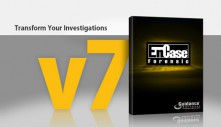
.iso
Mac OS X comes in various flavors, which varies the kind of hardware you'll use to run it on. That's why installing OS X 10.8.5 on a MacBook Air (released in 2012) is a lot different than on a 15-inch MacBook Pro (released in 2010). To run OS X on a Mac, you'll need at least a 1,4 GHz Intel Core 2 Duo processor.
You'll also need a screen that can display at least 1366 by 768 resolution (the resolution of the 2012 MacBook Air). If your MacBook Air has a screen that displays at 1152 by 720 resolution, you'll need to use a tool called "Out of Sync".
What if you already have the latest OS X installed? If you're on the home stretch to finishing up the latest Mac OS X installer.iso, you'll need to use a tool called "mover" to transfer the files from one Mac to another.
Yes, that's right. You can use the.iso to create a bootable external drive (USB or FireWire) that you can use to reinstall your Mac.
So, What Should You Do?
Now that you know what you need to do, you should consider the following:
Use Time Machine to save files: If you have a second drive for backup, you should always use Time Machine to back up your files. This is also an important step for Apple users who want to get the full benefit of using Apple's Time Machine feature.
If you have a second drive for backup, you should always use Time Machine to back up your files. This is also an important step for Apple users who want to get the full benefit of using Apple's Time Machine feature. Make a bootable.iso drive: If you don't have a second drive for backup, the next best thing is to use your.iso to create a bootable external drive (USB or FireWire).
If you don't have a second drive for backup, the next best thing is to use your.iso to create a bootable external drive (USB or FireWire). Back up your files: Use a combination of the.iso, Time Machine, and bootable external drive to get the best results possible.
Use a combination of the.iso, Time Machine, and bootable external drive to get the best results possible. Install OS X on more than one Mac: As you'll see in the next steps, you
Related links:
Comments